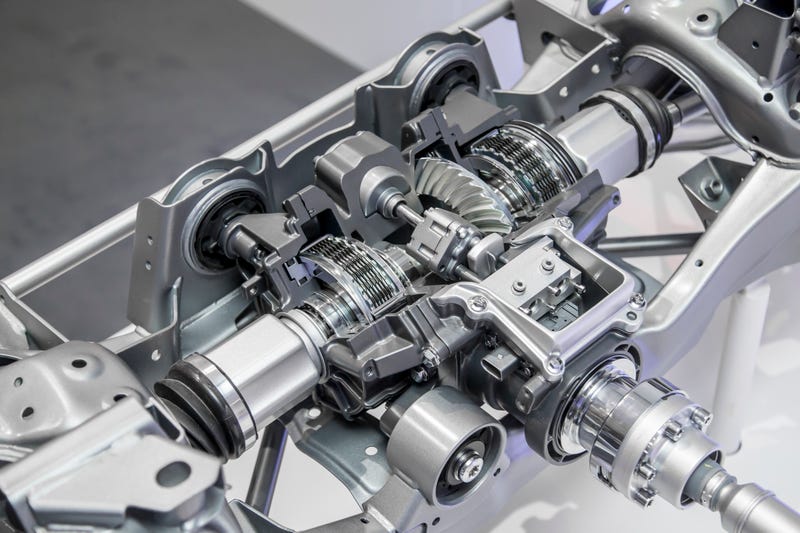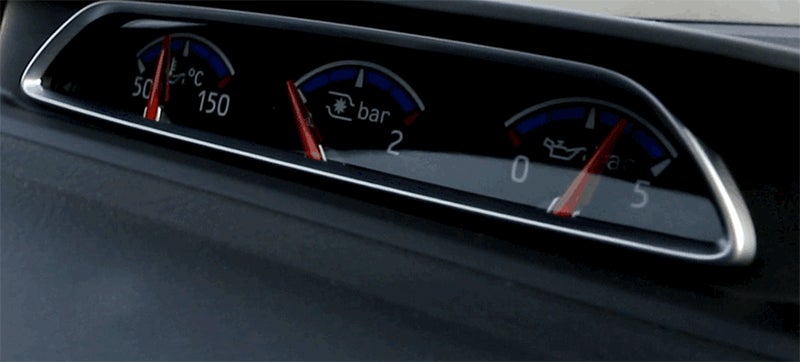The 2016 Ford Focus RS Is God In Hatchback Form
The most impressive thing about the 2016 Ford Focus RS
isn’t the Drift Mode or the fact that it’s stupidly fast on track
without showing any sign of understeer. What you’ll really love is how
refined and easy it is as a road car. No hot hatch ticks all the boxes
quite like Ford’s does—and rejoice, for this Euro legend is finally
coming to America.
[Full disclosure: Ford flew me to Spain, let me
drive the RS on track and even paid for all my beers. Plus, they gave me
that sweet RS poster. Everything about Spain is wonderful, except maybe
the Guardia Civil.]Simply put, I would daily the crap out of the Focus RS. In Nitrous Blue. But before explaining why, let me walk you through how Ford came up with its first global RS car.
Tyrone Johnson, a guy who spent the last 31 years of his career at the company only to end up being Ford Performance’s Vehicle Engineering Manager responsible for the RS project, says anything that understeers is “shit.” No excuses. It’s just shit, he said.
I tried to explain him that the Civic Type R is fun anyway, but he was having none of it.
This Is Where It Got Complicated
Ford decided to put the Mustang EcoBoost’s 2.3 four-cylinder under the hood, but upgraded with a new twin-scroll turbocharger, intake, exhaust, high-flow head, stronger cylinder liners, oil cooler and the largest radiator and intercooler they could physically jam into the car.The resulting 350 horsepower and 350 pound-feet of torque meant there was no other way than going all-wheel drive. And while they actually built a prototype using a Haldex system like the one you find in cars such as the Volkswagen Golf R, that didn’t cut it, because as I mentioned before, understeer is shit.
Plan B came just 18 months before launch:

Basically, it’s an electro-hydraulic system with torque vectoring, consisting of a rear drive unit capable of overspeeding the rear wheels at a 1.8 ratio, with wet clutches on both sides and a separate cooler, connected to what acts as an open front diff with brake-based torque vectoring by a three-piece driveshaft.
Rather complicated? Hell yeah. But as Clarkson would say, it does many things.



Track Mode Or Drift Mode?
When you’re just cruising along the highway with minimum steering input, the pumps turn off, disengaging the rear clutches so you end up driving a front-wheel drive Focus. But the moment there’s something more action packed going on, it’s back to all-wheel drive that can send up to 70 percent of the torque to rear wheels.The rear drive unit also directs 90 percent of that torque to the outer wheel to help the car turn, or all to each side back and forth if necessary. The sensors monitor the situation at a hundred times per second, which sounds about enough to me.
There are other modes besides Drift, also. Track Mode gives you minimum ESC interference while making Tenneco’s inner-valve two-stage electric shocks 40 percent stiffer than in Sport mode, while Normal is pretty much the same as the Focus ST’s settings.
With the springs being 33 and 38 percent harder than the ST’s, the benefits of the reenforced chassis and Michelin’s specially developed Pilot Sport Cup 2 tires, this is the RS’s fastest setup unless you’re confident enough to switch off the ESC completely.
The cool thing is that the damper settings can be changed in any of the drive modes with one finger, while Track and Drift can be limited to your key in case you don’t wish to give a chance for your teenage son to try them out on his way to the grocery store.


The brakes are rock solid four-piston Brembos with 350mm rotors. They got their own cooling ducts at the front, which was significantly redesigned to let through as much air as possible. The RS’s grill mesh is so thin you can barely see it, and somewhere behind it, there’s an intercooler the size of Texas.
With the cooling done, Ford had to sort out the aerodynamics, and with the front splitter, rear diffuser and roof spoiler, they managed to get zero lift at both ends. Ground clearance? Forget it. The moment you hit a steep driveway, it’s a touchdown. And while we are at it: The steering might have a quicker ratio at 2.0 lock to lock, but the turning circle will still make you reverse. A lot.

Ford will say that’s because they are the mature ones, but the reality is that unlike the Focus you buy in America, the Focus RS is built on a standard assembly line in Germany and the engines are put together in Spain. That means every RS-specific modification had to fit the line, and crazy wide wheel arches were out of the picture from day one. Having said that, the RS is 23 percent stiffer than a regular Focus, thanks to a completely redesigned rear subframe and braces welded into the body itself.
To keep the weight figure down, they just ditched some of the sound isolation. You can also order your RS with superb lightweight seats, as long as you’re in Europe.

In Those Seats
The first thing I noticed is how quiet the RS is when you’re driving it just like you would roll in a regular Focus. There’s bit of roar in the background as a reminder of those 350 horses, but you can have a normal conversation. And since the clutch, the six-speed manual and the steering are also as easy to operate as in any normal hatchback, there’s no reason why you shouldn’t do everything driving an RS. Some hot hatches you can live with, but this is a true daily driver.Easy? Quiet? You might be wondering if I’m really talking about the RS here. But I am, and it works.
My sound level observation might be totally off, because Mr. Caswell found it to have more road noise than what some might expect. Still, I think in Normal mode, the RS might just be the most livable sports car out there. Ford also put a manual in it partly for cost reasons, because they believe a hot hatch makes no sense if people can’t afford it. Plus, I guess it would be hard to sell a more expensive hatch with a Ford badge.
Either way: kids, dogs, tracks. That was pretty much the mission, and they scored big. It can do everything.

Sport Mode will satisfy most on a normal day, but since we’re talking about a performance car here, I have no doubt many buyers will ignore the message on the screen and switch their STI-slayer Focuses to Track or Drift on public roads as well.
While Ford wouldn’t recommend that, the good news is that the RS won’t turn into a suicide machine when you dial it up, although if you go even further by switching off the ESC, you better know what’s up.
Ford’s engineers say they have achieved RWD feel with AWD traction, but to me, the RS felt more like a perfectly balanced AWD car that could oversteer on the track if you really insisted.

Zero to sixty in 4.7 seconds comes courtesy of a turbo operating at 23 psi, the AWD locking the rear into a solid axle, revs locked at 5,000 RPM, you dumping the clutch as quickly as possible and not lifting from the gas between first and second. It’s rather entertaining.
For this kind of money—a base price of just $35,730 in the U.S.—the RS really has no competitors. Even the WRX STI, Golf R and Civic Type R can’t offer this much of both livability and performance.
I spent nearly an hour in it on a track at speed without feeling bored for a second. It’s got nice steering, all the power and brakes that will outlast you. It doesn’t go wide, lets you know exactly when those Michelins want to go on holiday, and as a road car, I just loved it even more.
A fair question at this point is reliability.

Our second cars worked perfectly fine, but Ford admits that the RS’s Twinster system is pretty close to its limits handling 350 horses and 350 foot pounds already, so in case you’re planning to go aftermarket and increase the power further without beefing up the drivetrain, expect to get some shredded metal with your voided warranty.
And what if Ford made an even faster, hotter Focus RS? It will have to have bigger gears as well as a turbo, that’s for sure.
In the meantime, I would buy just this regular one in a heartbeat. There is nothing it cannot do (except maybe go off road like a WRC car. Maybe.)
Meet God in hatchback form.


No comments:
Post a Comment